Cape Town &
the Cape region
21st MarchAfter variable amounts of sleep on the plane (ranging from none to ten hours!), we finally reached Cape Town at about 1010 local time – the sky was blue, and the temperature was high! Awesome. Formalities completed, we met up with the admirable Rainer, and headed off for the hotel (via Hartlaub’s Gull, Hadada and Black-winged Stilt) – very downtown, very central, entirely suitable! After a quick wash and brush-up, it was straight off to Kirstenbosch Botanic Gardens – plush, very organised and extremely pleasant, as well as being full of endemic plants and not a few endemic birds. Either side of a tasty lunch (various Ostrich and Springbok recipes appeared popular), we scored with a whole raft of endemics and near endemics, plus a few more widespread African species. Highlights included Spotted Eagle-owl (found by Sam – on a roll already!), Cape Sugarbird, Cape Francolin, Cape Batis, Cape White-eye, Cape Bulbul, Cape Robin-chat, Cape and Forest Canaries, Jackal Buzzard, Gymnogene, Black Sparrowhawk, Red-winged Starling, Greater Striped Swallow, Black Saw-wing, Southern Boubou and various others! Not too overwhelming for the birders, and not too bad for the beginners – nearly everyone saw all the important species really well in the end. We were flagging by shortly after 1700, and it was back to the hotel for a meal and an early night. 22nd MarchUp at a trademark Rockjumper early hour, and straight off on the highway south-east to Rooiels Bay. In the lovely cool morning, with the sun still behind the mountains to the north-east, we soon started to see special things – Cape Rock-thrush, Cape Bunting, White-necked Raven and lots of Sunbirds of three species. Offshore, we picked up Sooty Shearwaters, Swift Terns, Cape Gannets, Cape Cormorants, and even Subantarctic and Arctic Skuas. Better still, we had brief views of blowing Bryde’s Whales in the bay . But the main event at Rooiels was still to come, and within seconds of starting our search, Rainer found the target – Cape Rockjumper! Within a few minutes we’d seen two stunning males, and one of them proceeded to approach within about three metres – awesome views were had by all. We explored the low fynbos a little further, and soon located both Cape Grassbird and a highly, highly elusive Victorin’s Warbler. It was now getting hot, and while we did add a spectacular Verreaux's Eagle high over the cliffs, we couldn’t find Ground Woodpecker before lunchtime called. Vast T-bone steaks and pizzas were eaten by all, and most proceeded then to sleep on the way back towards Cape Town – although we did stop for another Bryde's Whale and some Cape Fur Seals. The afternoon we spent at Strandfontein sewage works (huge) and added hatsful of new birds – South African Shelduck, Levaillant’s Cisticola, White-throated Swallow, Little Rush Warbler, African Marsh Harrier, Maccoa and White-backed Ducks (oh yes!), Cape Shoveler, Cape Teal and Southern Pochard. Awesome stuff – add in Ruff, Avocet, Caspian Tern, White-winged Black Tern, Peregrine, African Darter, Black-necked Grebe and even Red-necked Phalarope (a lifer for Rainer!) and it should be clear that we were deluged with great birds. 23rd MarchUp for 0600 once again, and this time off towards the Cape Peninsula. We stopped off at Scarborough to have a look at whatever was along the seashore – it was mostly familiar stuff (Cape Cormorants, Kelp and Hartlaub’s Gulls and Swift Terns), but a bit of diligent searching turned up Pied Kingfisher, Cape Wagtail and the two very desirable (but in truth not terribly exciting) local endemic Cormorants, Bank and Crowned. Offshore, a few Sooty Shearwaters and Cape Gannets scudded by, but the adrenaline then surged when, once again, there was a call of a cetacean blow just offshore. And this time the blow was unmistakeable: big, persistent and V-shaped – Southern Right Whale! These placid, slow creatures are not supposed to be off the Cape at this time of the year, but here we had at least three and perhaps four massive whales right beyond the kelp forest in the bay! They rolled about, spy-hopping, fin-waving and fluking to everyone’s absolute delight. A fantastic surprise, and the first ever “great whale” sighting for the NHS – a red letter day! Onwards next to the Cape of Good Hope NP – the saw a very few game animals in the fynbos here – Bontebok, Red Hartebeest and Eland, plus a few apparently legitimate Ostriches! But the real highlight came on a roundabout near the Cape itself, where we screeched to a halt to watch a metre-long (and very deadly) Puff-adder crossing the road, in a very odd fashion – dead straight, with no sinuous snaky movements. The braver souls approached as close as they dared for photos, and we all gulped as it vanished into the fynbos – it was totally invisible in the bushes, and how many had we walked right past yesterday at Rooiels? After an inevitable hot at the Cape of Good Hope, we trundled the short distance round to Cape Point, where we took a stroll up to the lighthouse and looked for birds and reptiles around the bushes and buildings. A single Chacma Baboon greeted us, but perhaps more exciting were a pair of Cape Siskins, plus Cape Bunting, African Rock Martin, Southern Boubou, Bokmakierie, Striped Mouse and the über-endemic Black Girdled Lizard, found only on the Peninsula. We retreated to the restaurant for another slap-up feed – accompanied by the local tame Red-winged Starlings. Post ice-cream (hardly a tough trip, this one….), we hit the road once more, and headed back to Cape Town for our next date with tourism – Table Mountain! The ride up on the cablecar was very cool – a rotating cabin, no less – and the weather 1000m up was distinctly cold, with quite a lot of cloud blowing over the top of the hill and cascading down the sides – stunning. The fynbos is in quite good shape up there (no alien species), and while it wasn’t by any means as colourful as it could have been, it was great to get a feel for the Cape floral kingdom. Birdwise, it was a bit quiet, but we scored with African Black Swift, another couple of Cape Siskins and Familiar Chat. But birds weren’t the main issue – just the amazing views down onto Cape Town and north up the coast towards Namibia (well, not that far....). Fantastic, and another global landmark ticked off! 24th MarchUp early for us all (except Freddie T, who wasn’t very well, and Barney, who is a bit of a lightweight), and up onto the lower slopes of Table Mountain for spectacular dawn views over Cape Town and a nice selection of birds – only Neddicky and Rock Kestrel were actually new, but we had much better views of Cape Bunting, Cape Grassbird, Karoo Prinia, Verreaux’s Eagle, Cape Siskin and various others. Also, we finally pinned down Rock Hyrax for everyone! Back to pick up the others (Freddie much improved), and then the short drive down to the Victoria & Alfred (sic) docks to catch the ferry to Robben Island. This was quick and comfortable, and by 1130 we were on the Island. It’s a pretty bleak place – hot, sandy and knackered ecologically by European Rabbits. We did the obligatory bus tour around the perimeter road, having a look at the various historically important ruins – and seeing a handful of African Penguins, a couple of Black Oystercatchers, and even two Angulate Tortoises! The prison itself was sobering but oddly anodyne – as these sorts of places often are – and simply too covered in tourists (such as ourselves) to be terribly meaningful. Still, it’s one of those things you do. “Dark tourism”, indeed… Once back on the mainland some four hours later, we had an excellent pancake lunch right by the docks, and then headed off to Simon’s Town, and the Boulder Beach African Penguin colony. Excellent, easy and very entertaining birding! The boardwalk was surrounded by hundreds of penguins – displaying, nesting, swimming in to the beach and out to sea – great fun, and a really good experience. 25th MarchAn even earlier start – departure at 0600. Quite a severe panic first thing – Julia had lost her bins! They HAD to be either packed or still on the bus – but we couldn’t find them….but we had to go. Calum very gallantly offered his NHS pair to a grateful Julia. We got to Simon’s Town on time, and soon got loaded up on our two boats – but another mishap struck! This time it was Theo’s bins – but this time we knew where they were: at the bottom of the harbour! Ooops… Still, nothing for it but to head out to sea, and within minutes it was clear our luck was in – we saw a couple of Bryde’s Whales blowing, and were soon surrounded by literally hundreds of Common Dolphins, and probably over a thousand Sooty Shearwaters, with lots of Common Terns and several attendant Arctic Skuas hunting. We reached Seal Island after about 30 minutes, and began our shark trawl with a dummy seal – made of carpet! No bites…. Then after a tour round the island (many 1000s of Cape Fur Seals, and a few African Penguins), we chucked a tethered Tuna head over the side, and started chumming. And we waited….and waited. A distressed young seal turned up – plainly unwell and thrashing about in the water – a good sign? More waiting… “SHARK!!!!” – the shout went up and we all had brief but good views of a scary Great White Shark (estimated at 3.7m long) alongside the boat, just nuzzling the seal! The fin, the huge gun-grey flanks – wow! It was brief, but we’d seen it – awesome! We waited some more, but it didn’t resurface – until one boat had left! The others had further brief views on this occasion – when the seal reportedly met its (quiet and unspectacular) doom… The journey back gave us more dolphins and another Bryde’s Whale, and some fun for the chaps up front who wanted to get wet! Lunch at the harbourside was enlightened by the remarkable sight of a scuba diver emerging from the harbour – with Theo’s bins! Success! And they lived up to their waterproof billing – they still worked. And Julia’s bins turned up as well – they’d been on the bus after all, and were in the Cape Town office – so we could pick them up. Relief all round. The rest of the day was spent largely making the long journey north to Lambert’s Bay – some four hours plus. We did see a few goodies on the way – a pair of Blue Cranes, Black Harrier (for Simon only…), Cape Sparrow, Cape Weaver, Yellow Canary, Pied Starling, Capped Wheatear, Karoo Scrub-robin, and a host of roadside birds, such as Black-shouldered Kite, Jackal Buzzard, Common Fiscal and so on.
|
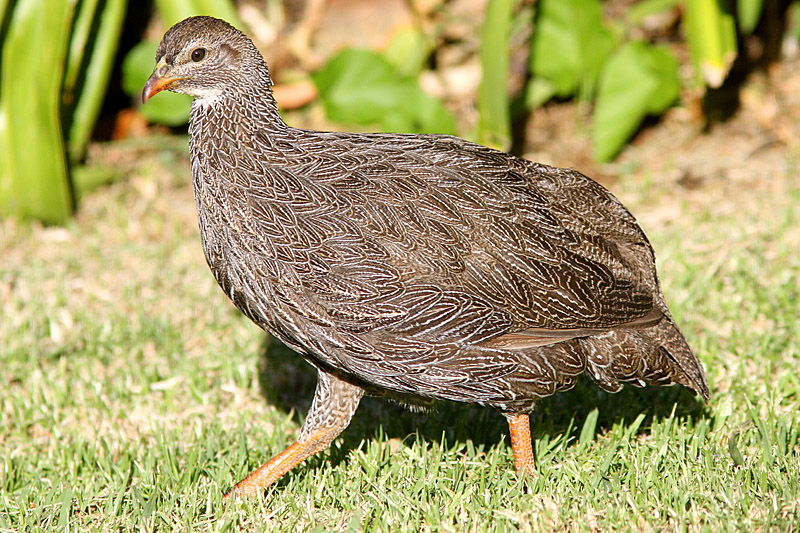 |
||
Cape Spurfowl -
a reasonably common and approachable endemic |
|||
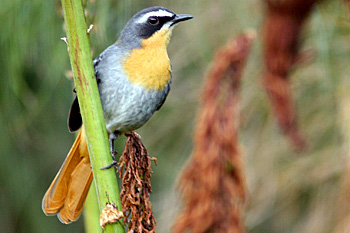 |
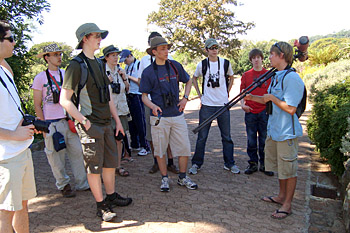 |
||
Cape Robin-chat
|
Rainer & the group at Kirstenbosch
|
||
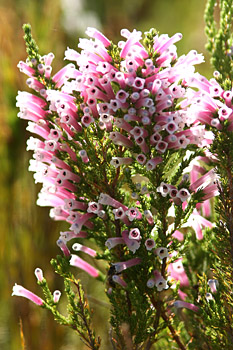 |
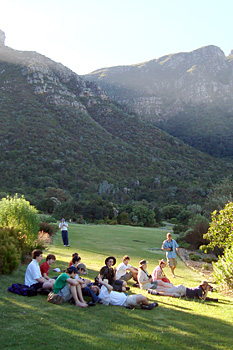 |
||
Erica tree-heather
|
At Kirstenbosch gardens
|
||
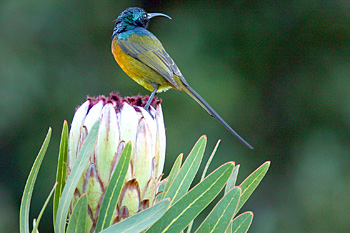 |
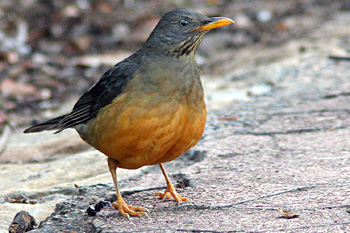 |
||
Orange-breasted Sunbird on a Protea
|
Olive Thrush
|
||
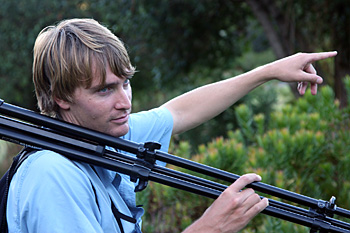 |
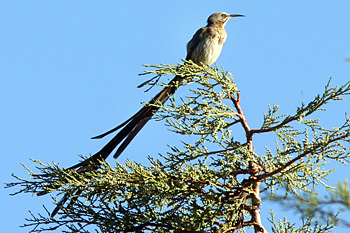 |
||
Rainer in didactic mood
|
Male Cape Sugarbird
|
||
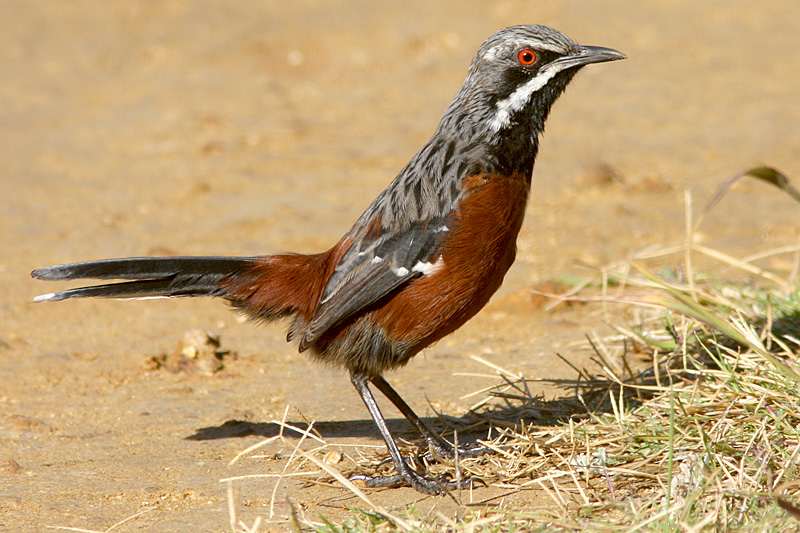 |
|||
Cape Rockjumper -
perhaps our no.1 target species, and later voted bird of the trip |
|||
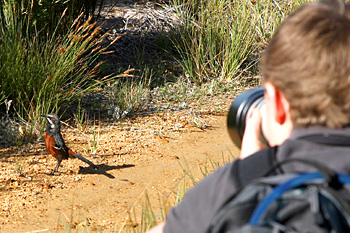 |
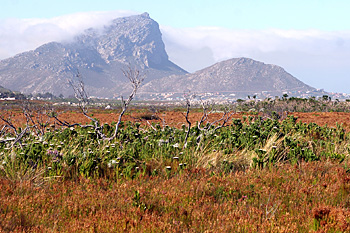 |
||
And he was tame!
|
Rooiels Bay
|
||
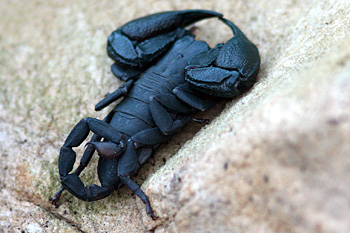 |
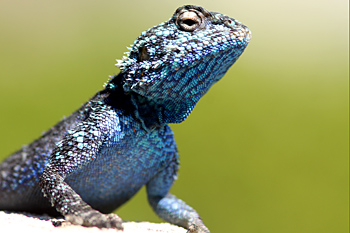 |
||
Scorpion (found by Olly - who else?)
|
Southern Rock Agama
|
||
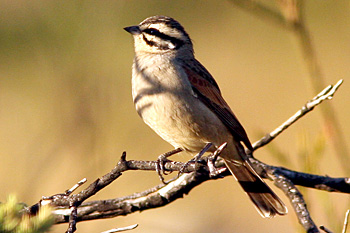 |
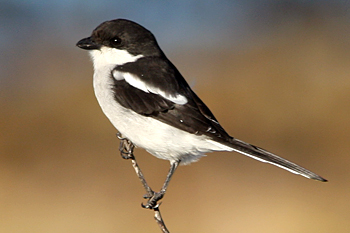 |
||
Cape Bunting - a common endemic
|
Common Fiscal
|
||
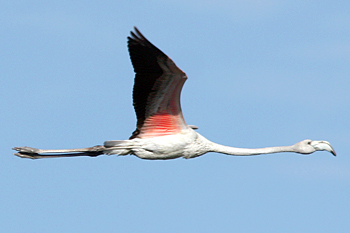 |
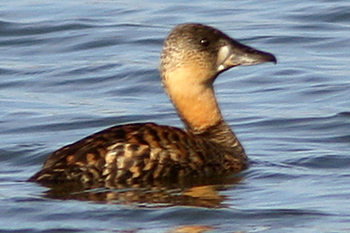 |
||
Greater Flamingo at Strandfontein
|
The highly desirable White-backed Duck
|
||
 |
 |
||
At the end of the world....
|
Hotting, as required....
|
||
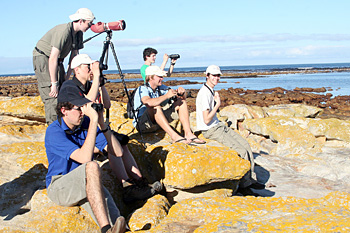 |
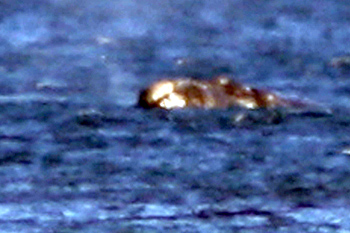 |
||
Whaling at Kommetjie
|
Southern Right Whale just offshore
|
||
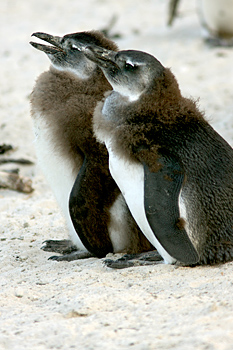 |
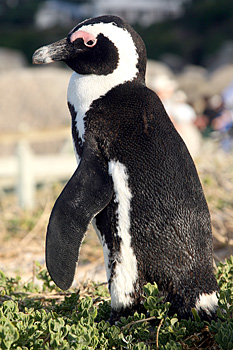 |
||
Africa Penguins...aaaah!
|
More African Penguins....
|
||
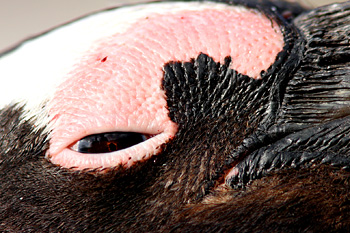 |
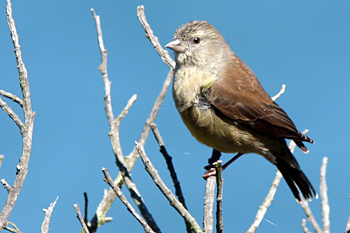 |
||
....and still more.....
|
Cape Siskin - a tricky endemic species
|
||
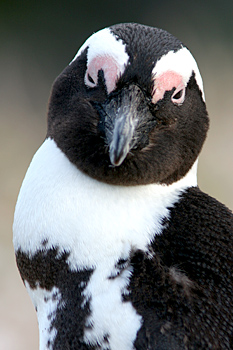 |
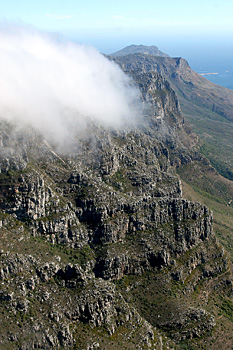 |
||
.....and one for luck!
|
The "Tablecloth"
|
||
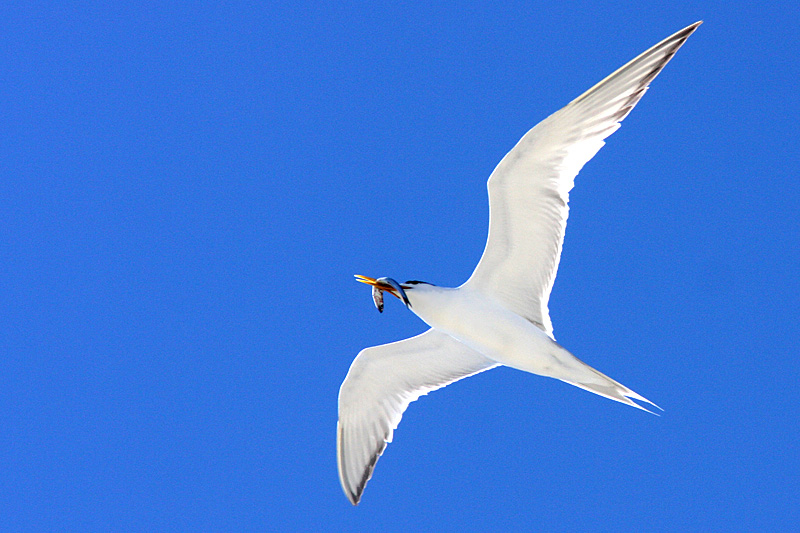 |
|||
Swift Tern at Robben Island
|
|||
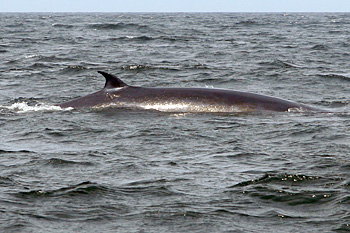 |
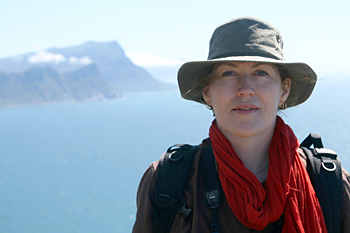 |
||
Bryde's Whale (pronounced "Brooder's")
|
Julia at Cape Point
|
||
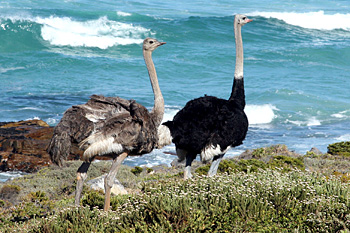 |
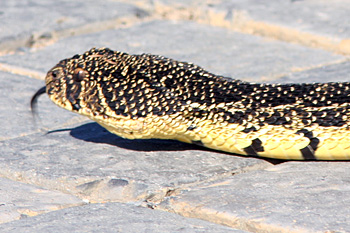 |
||
Seaside special Ostriches
|
Gulp! Puff-adder!
|
||
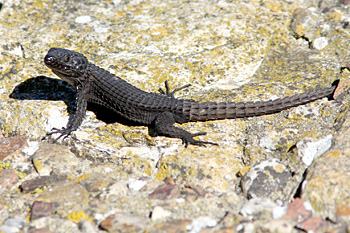 |
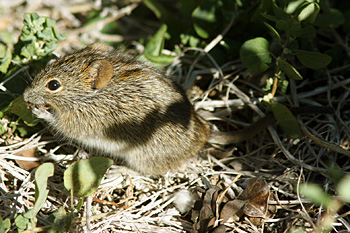 |
||
Über-endemic Girdled Black Lizard
|
Striped Mouse - Puff-adder snackfood....
|
||
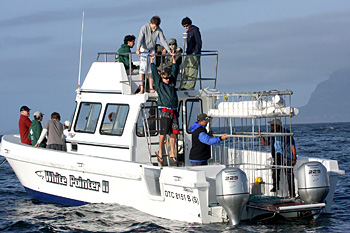 |
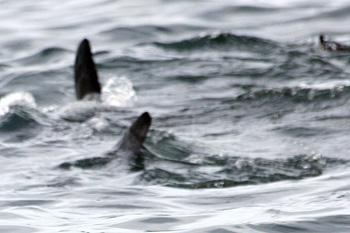 |
||
Sharking in False Bay
|
The worst picture ever taken of a Great White Shark!
|
||
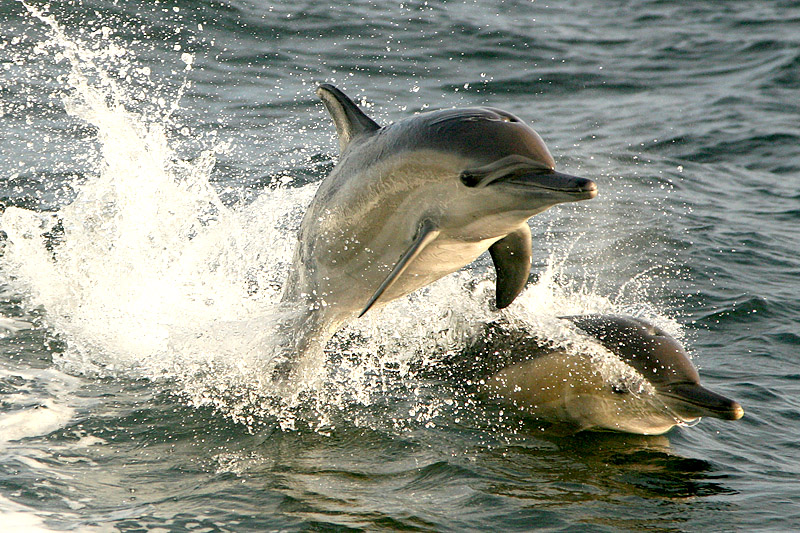 |
|||
Common Dolphins - c.1000 were in False Bay!
|
|||
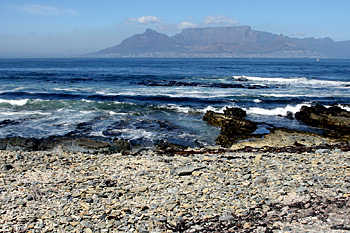 |
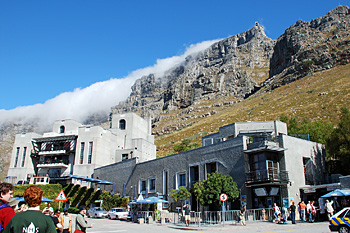 |
||
Table Mountain from Robben Island
|
Table Mountain by cable-car....
|
||
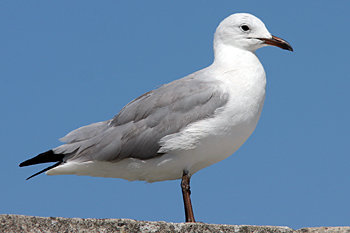 |
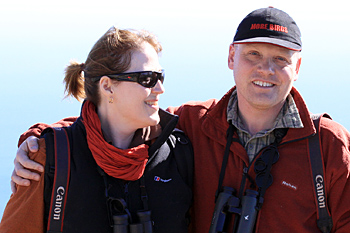 |
||
Hartlaub's Gull - endemic and common
|
Us on top of Table Mountain
|
||